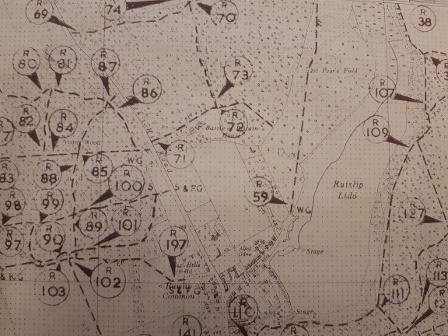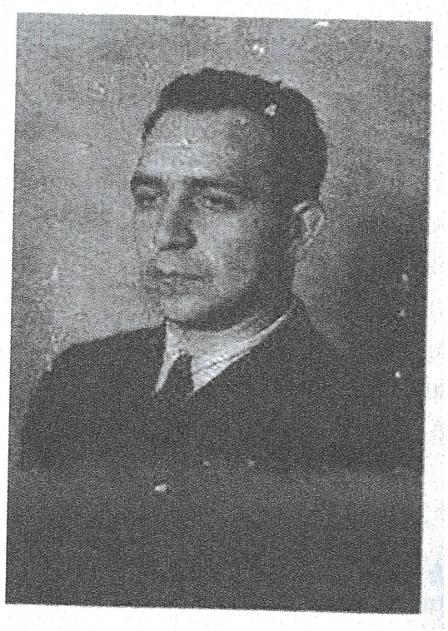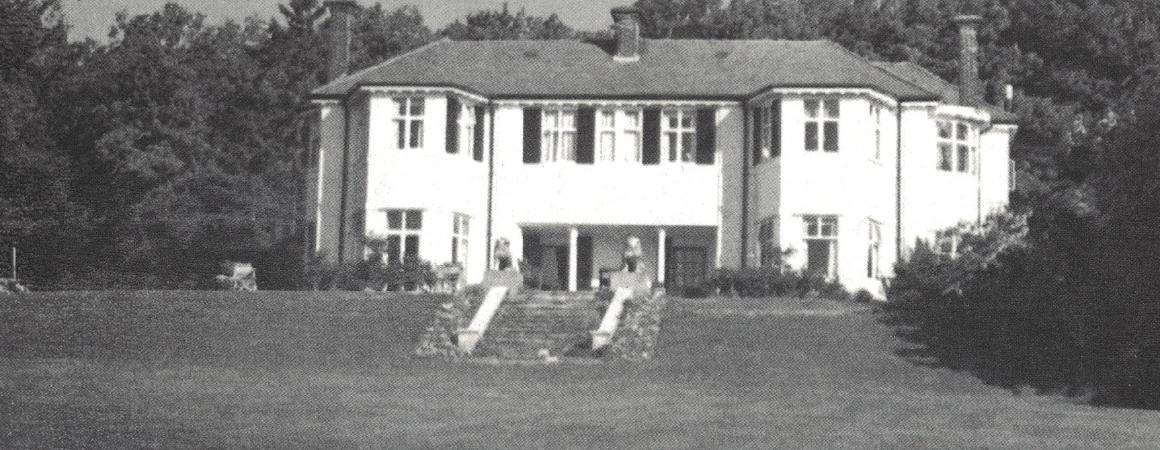Local stories: Battle of Britain House
Origins of the House

The first residence was built in 1904 by a farmer named Josef Conn, who obtained a lease from King's College to develop on the site. The mansion was then purchased by eccentric travel writer, Meyer Franklin Kline. It subsequently became known as 'Franklin House' after American President, Franklin D. Roosevelt.
Kline travelled the world, even during the First World War, and developed the mansion with antiquities that he'd procured on his travels. He renamed it "Kokyo" after the Japanese Imperial Palace in Tokyo. Unfortunately, for Kline, he lost his fortune just before the outbreak of the Second World War. It is speculated that this could have been due to his close ties with Japan, who were becoming increasingly belligerent under Emperor Hirohito. He was forced to relinquish possession of the house.
During the Second World War the site was acquired by the War Office and was used to train agents of the US Office of Strategic Services, (OSS) the predecessor to the Central Intelligence Agency (CIA). These agents were part of the Clandestine Operations Division who specialised in 'behind enemy lines' sabotage missions. The proximity to the woods around the House made this an ideal location for training.
Kurt Gruber
Many individuals passed through the doors of Franklin House to undertake training for 'behind enemy lines' missions. One such agent was a man called Kurt Gruber (see photo.) Gruber was a staunch trade unionist and miner who had been driven out of Nazi Germany in the 1930's due to his overt opposition to the regime. He was a director of his local Anti-Nazi youth federation and was instrumental in publishing pamphlets and spreading information around Germany. His boyhood friend and fellow miner Kurt Julius Goldstein credits Gruber with being a powerful resistance leader and states how prescient he was in warning people about the Nazis. Goldstein was imprisoned in Auschwitz but survived the war. He later recalled:
When I was at Auschwitz camp between 1942 and 1945, I often came to think of Kurt Gruber, because in these lectures he turned our attention to the anti-Semitic plans that Hitler had developed in his book1

Gruber was briefly interned on the Isle of Man as an enemy alien, but he was released to Scotland where he continued his career in mining and met his wife Jessie. Due to his pre-war contacts within the German Communist Party in exile and his ability to speak the language, he was recruited by the Office of Strategic Services and trained at Franklin House in January 1945. He attended daily briefings, learned to identify German military targets and supply trains, as well as training in close-combat and counterespionage techniques.
Tragically, in March 1945, on his first mission (codenamed CHISEL), Gruber was killed in a flying accident over Germany and his widow received his US Medal of Freedom some weeks later. There was controversy as to whether the aircraft should have been deemed safe given it failed safety checks prior to the mission. A post-war investigation was launched, but the cause of the tragedy is still unknown. Gruber was one of many individuals trained at Franklin House who made the ultimate sacrifice in order to defeat Nazism.
Post-war
At the end of the War the RAF assisted in converting the House to a residential college. However, not wishing to forget the sacrifice of those who flew in the Battle of Britain, the House acted as a memorial. Due to its proximity to several sites crucial to the Battle of Britain, such as RAF Northolt and Headquarters No.11 Group, the house subsequently became known as 'Battle of Britain House'.
1. Gould, Jonathan: 'The Courageous Life and Tragic Death of Kurt Gruber' from 'German Anti-Nazi Espionage in the Second World War' (Routledge, 2009)
Video: Military History Curator at Battle of Britain House site
Header image: Franklin House, as seen in 1948.
